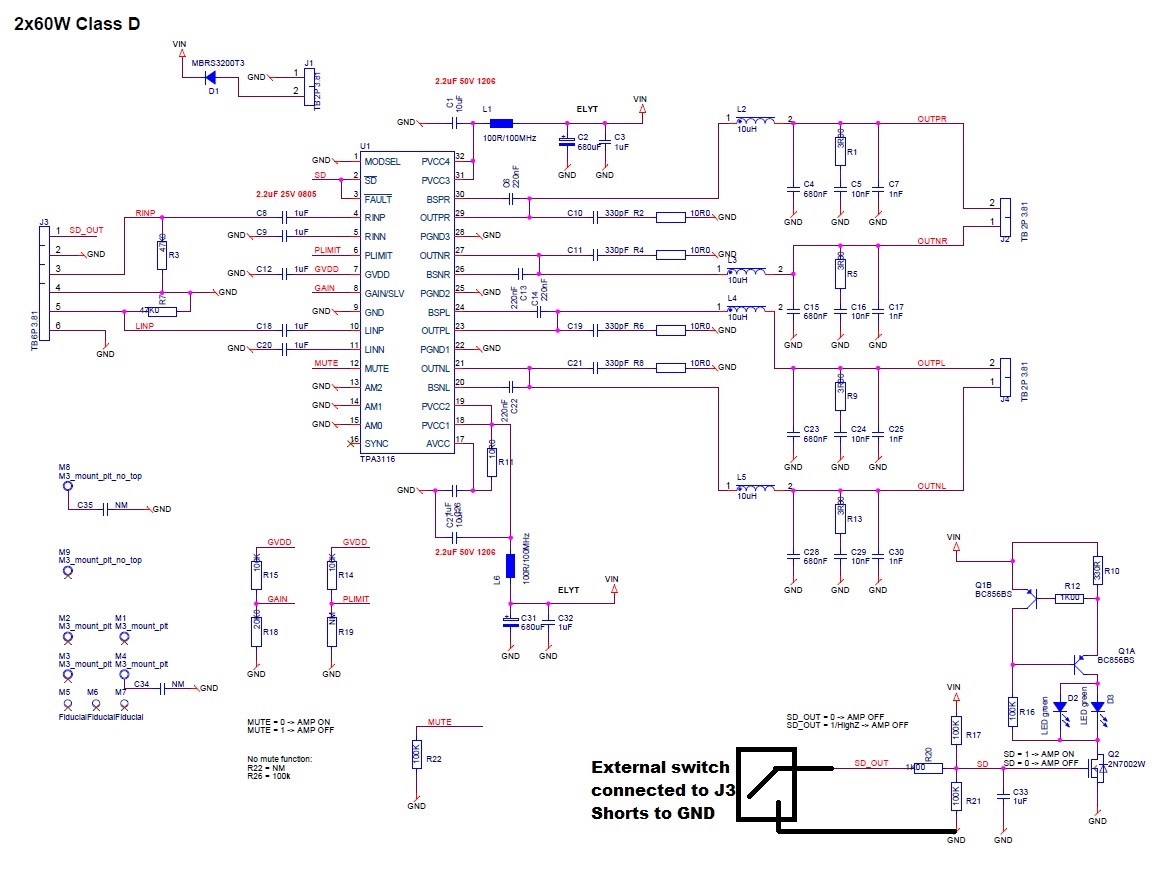I'm currenly doing a TPA3116 setup, but I am experiencing a rather high pop during turn on via SD.
My SD is done through a external switch, which pulls the SD to GND via 1k and pulled high with 100k to VDD. A 1uF cap is placed on SD pin which the 100k has to charge. Please see schematic.





